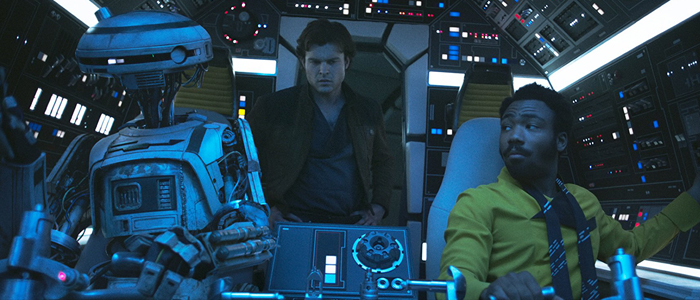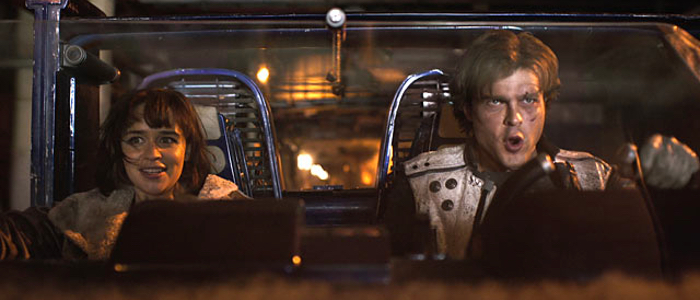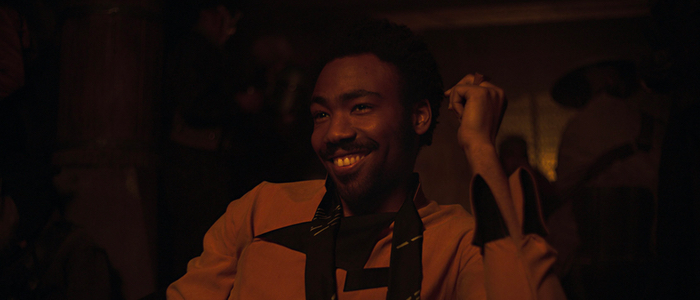One of the things Star Wars does better than almost every franchise is using new installments to add meaning to the previous entries in the saga. When Darth Vader uttered those infamous words, “No. I am your father,” Star Wars fans were sent reeling, going back to watch A New Hope to add that new revelation to their understanding of every scene. Was Obi-Wan lying in his hovel about Anakin? Was Vader lying in Empire? Had Uncle Owen told the truth and Vader had really been a navigator on a spice freighter? The revelation tears through expectations and forces you to rethink everything you thought you knew.
With Solo: A Star Wars Story, we get moments that will shade meaning across the saga. They might not have the same weight as Vader’s revelation, but what does?
We’ll go through them film-by-film and give you a deeper appreciation for what Solo: A Star Wars Story really does for the core Skywalker saga.
A New Hope
There’s a sizable gap of years between Solo: A Star Wars Story and A New Hope, about 10 years in fact. A lot has happened in that time, but Solo offers us clues about why Han Solo is the way he is.
“You mean you’ve never heard of the Millennium Falcon? It’s the ship that made the Kessel Run in less than 12 parsecs. She’s fast enough for you, old man,” Han tells Obi-Wan Kenobi in Chalmun’s Cantina in A New Hope. It’s a boast so impressive that it makes you wonder why Obi-Wan hasn’t heard. But this film gives you the idea that Han tells a lot of people and no one really cares. Maybe they don’t even believe him, either. No one runs the Kessel Run in less than 20 parsecs not because their ships aren’t fast, it’s because the pilots aren’t suicidal.
That particular run is also why Luke Skywalker remarks “What a piece of junk!” the first time he lays eyes on the ship. By then it was already a couple of decades out of date and Han really let the ship go.
One thing he did maintain was the Dejarik board. Chewie seems fond of playing holochess, so why not keep it? But it’s interesting to note that when Chewie and Artoo play in A New Hope, Chewie gets upset by losing the same piece the same way as he did when he played against Beckett in Solo. Maybe Chewie just isn’t a very good player and just never learns.
This film also establishes Han as the sort of character who will shoot first without asking questions, an echo of his encounter with Greedo. What’s fascinating to me here is how the dynamic of the scenes echo each other in opposite directions. In A New Hope, Han murders Greedo, then tosses the bartender some credits and cooly says, “Sorry about the mess.” It’s cold blooded and doesn’t bother him at all.
In Solo: A Star Wars Story, Han does the same thing to his mentor, Beckett, but it hurts him. He races to cradle his fallen father figure and comfort him in his dying moments. From this point, Han still has a lot of changing to do. We’ll talk more about this moment later, though.
The Empire Strikes Back
The Empire Strikes Back has three of the most intriguing echoes that radiate from Solo: A Star Wars Story. The first comes in the form of Han’s would-be tryst with Qi’ra in Lando’s cape closet. It bears a striking resemblance to the scene in Empire where Han and Leia have their first kiss while trapped in the belly of the space slug. Han tells Leia to admit that sometimes she thinks he’s all right. “Occasionally,” she tells him. “Maybe. When you aren’t acting like a scoundrel.”
“Scoundrel? I like the sound of that.” He goes on to say, “You like me because I’m a scoundrel. There aren’t enough scoundrel’s in your life.”
“I happen to like nice men,” she fires back.
“I’m nice man,” he says.
“No you’re not, you’re—” she says before getting interrupted by a kiss.
In Solo, the scene is reversed. He’s in the cape closet trying to convince Qi’ra he’s a scoundrel because deep down she knows he’s a nice man. Later in the film, he even inverts his “I’m a nice man,” line and tells her, “No. I’m a terrible person,” and happily proclaims himself an outlaw.
The scene with Qi’ra and Han’s kiss here is perfectly interrupted by Beckett the same way Threepio interrupts Han and Leia’s kiss.
In these moments, we know that Han is, deep down, the character he will eventually become: a hero who helps people, but this is his journey to fight and suppress that in order to survive in the world he was born into. This creates a fascinating social commentary as well. How many people live lives of crime who would otherwise be heroes if the circumstances of their socio-economic status allowed them to be? It’s a fascinating question that Solo brings into sharp focus.
Lando
The next major echo from Empire radiates from the relationship between Han and Lando. In Solo, they meet for the first time and it seems like their entire relationship is based on one-upping each other. They both think they’re the smartest person in the room, and neither of them really are. Like everything else in Han’s life, his friendship with Lando is moving in reverse. Han seems to be trying to run from his destiny and Solo highlights that.
Han and Lando hate each other, and Han embraces that, not realizing they could ever be real friends later, when they’ve both matured. Significantly.
Through the film, we see key events that get referenced in their relationship as well, showing their development.
“I hate you,” Lando tells Han.
“I know,” he says, a direct reference to his response to Leia’s profession of love for him in the carbon freezing chamber on Cloud City.
At the end of the film, Han greets Lando with fury that turns into a hug, turning their meeting on Cloud City around.
Continue Reading The Echoes of Solo >>
The post The Echoes of ‘Solo’: How the New ‘Star Wars’ Story Reflects Other Films in the Saga appeared first on /Film.
from /Film https://ift.tt/2IYJVKw




No comments:
Post a Comment